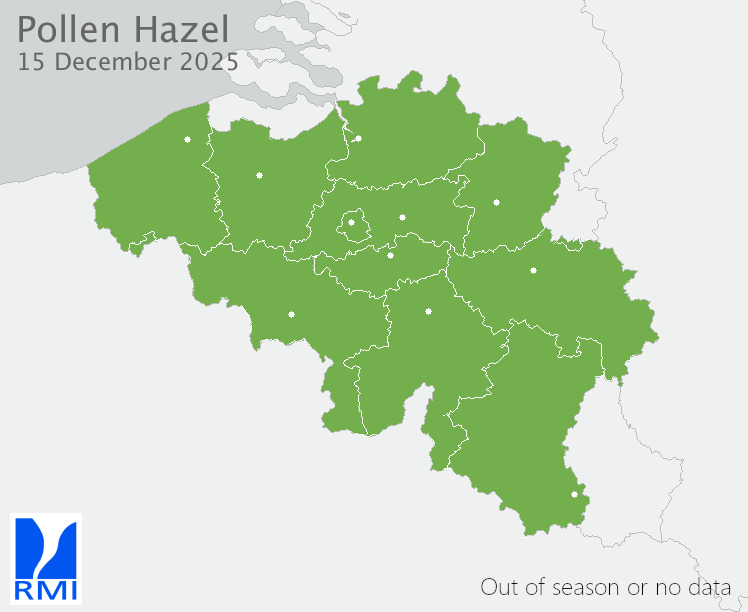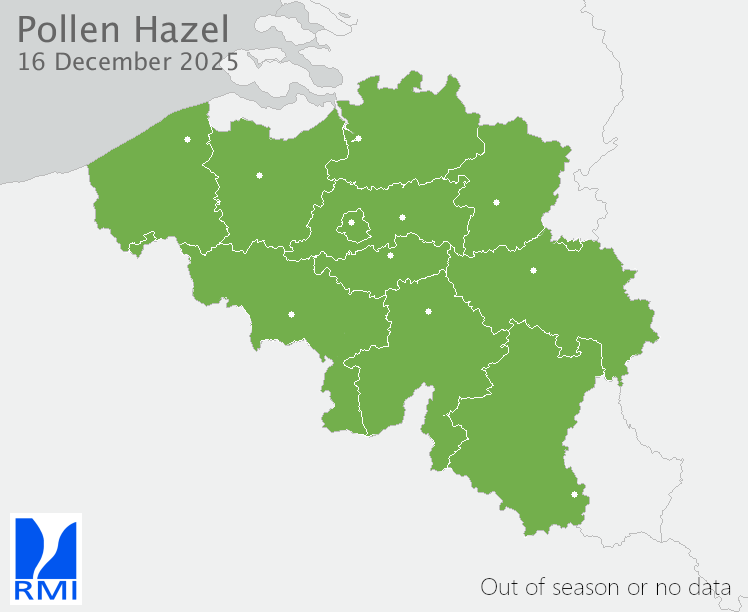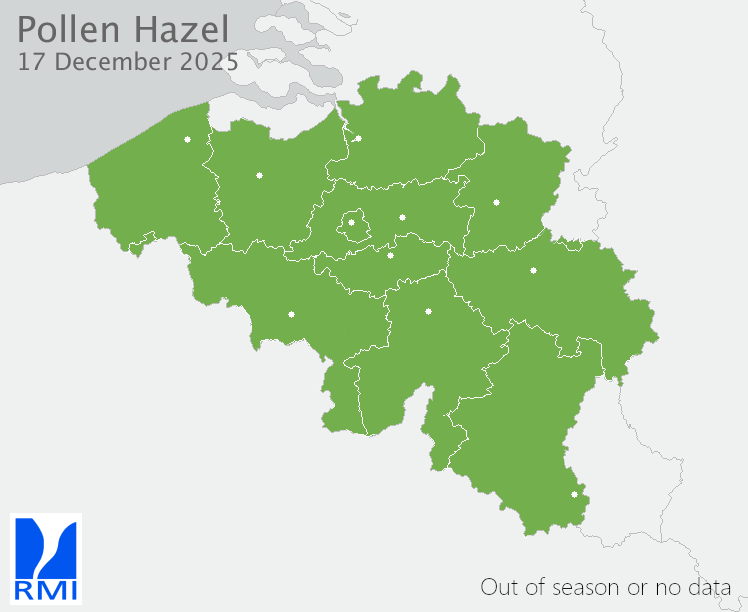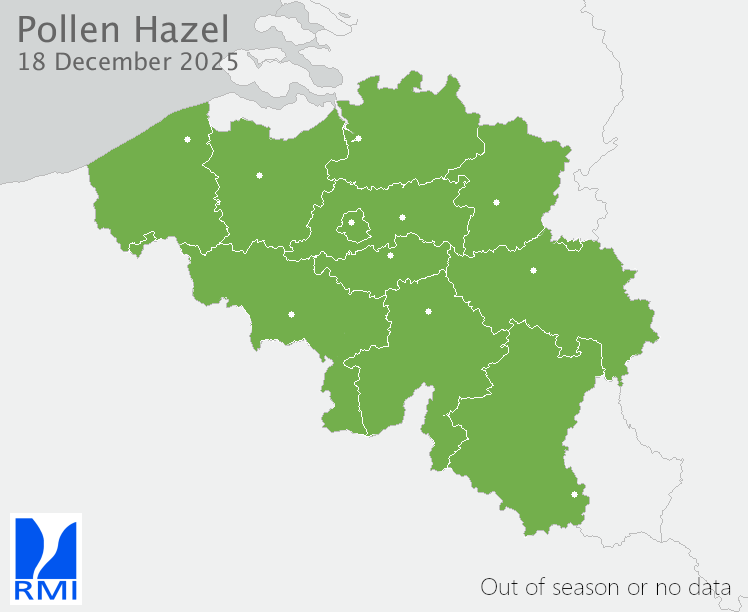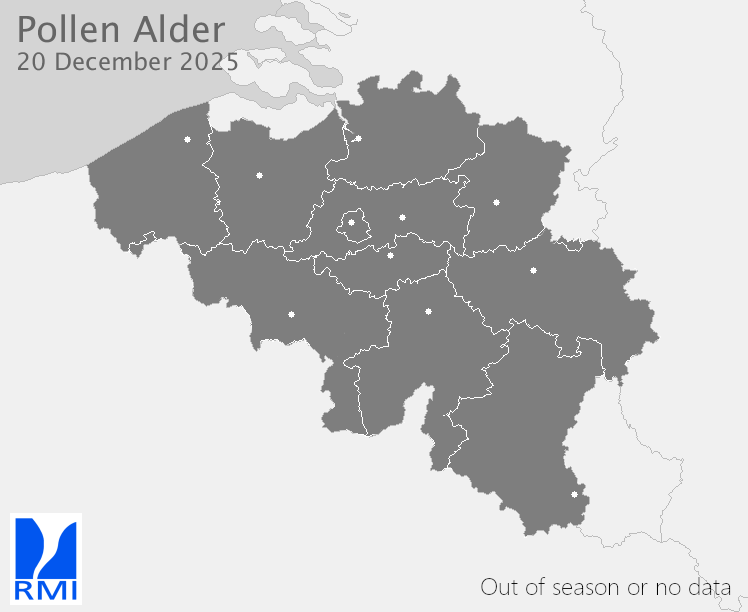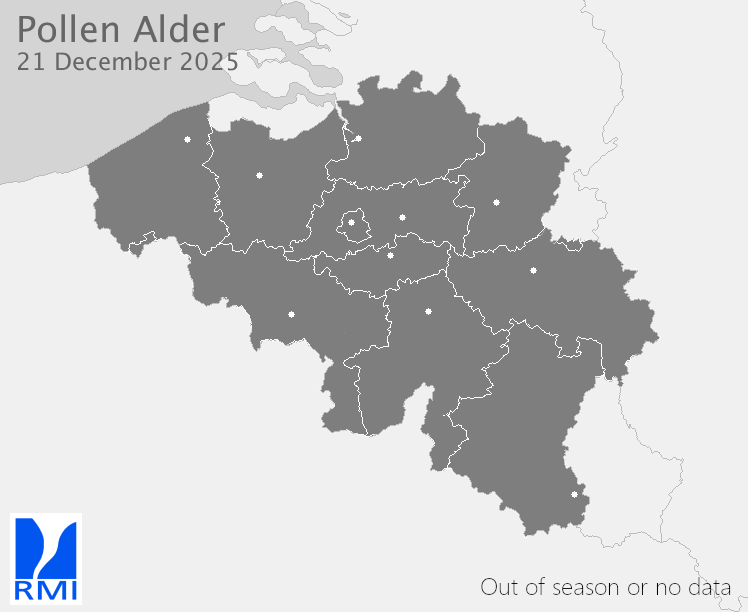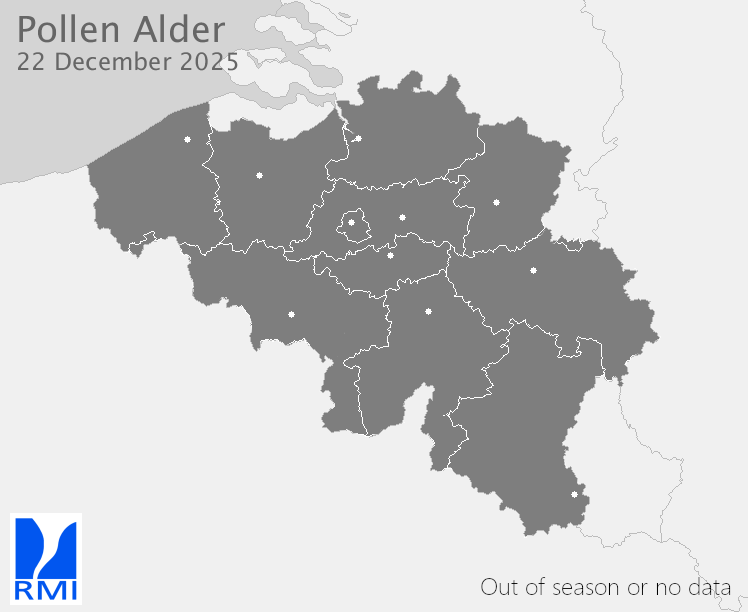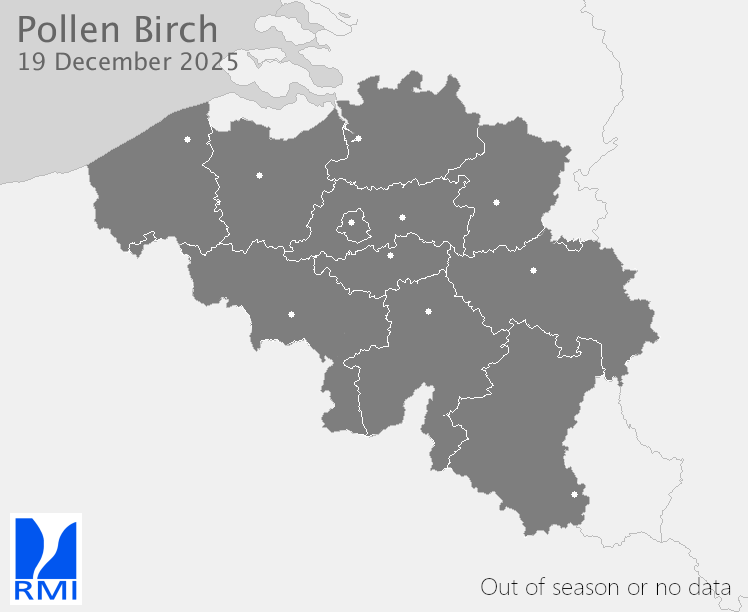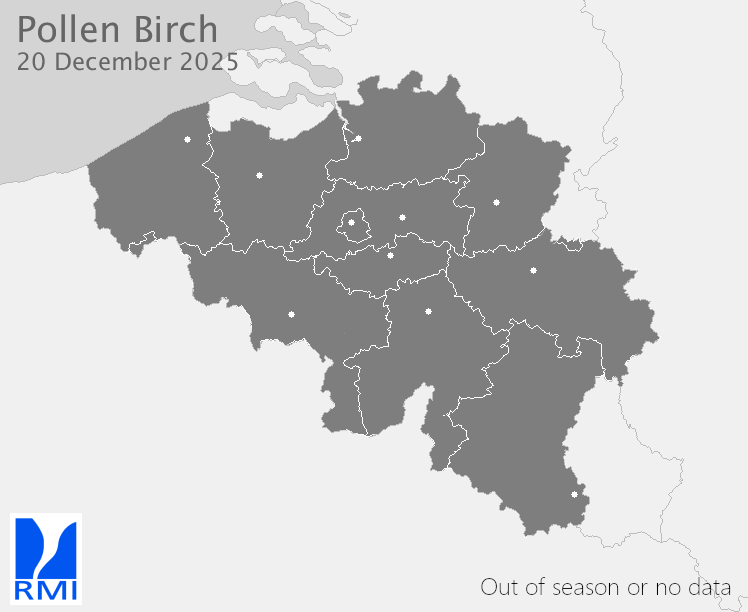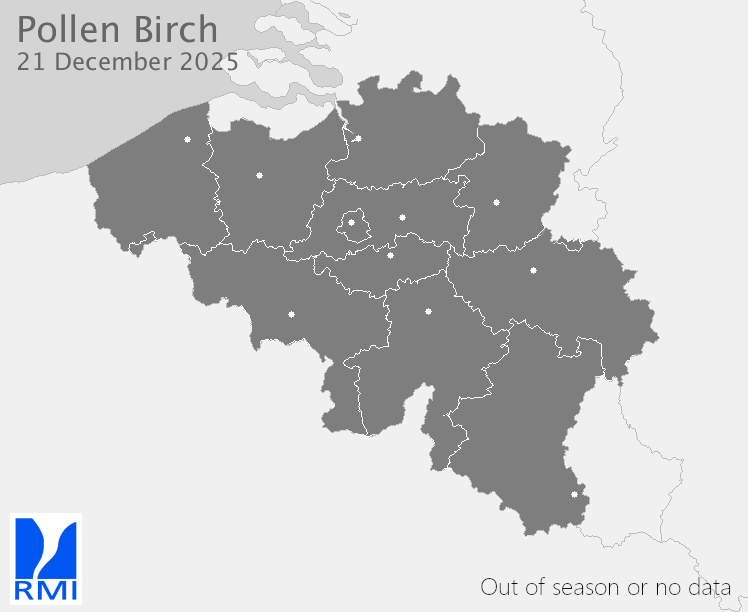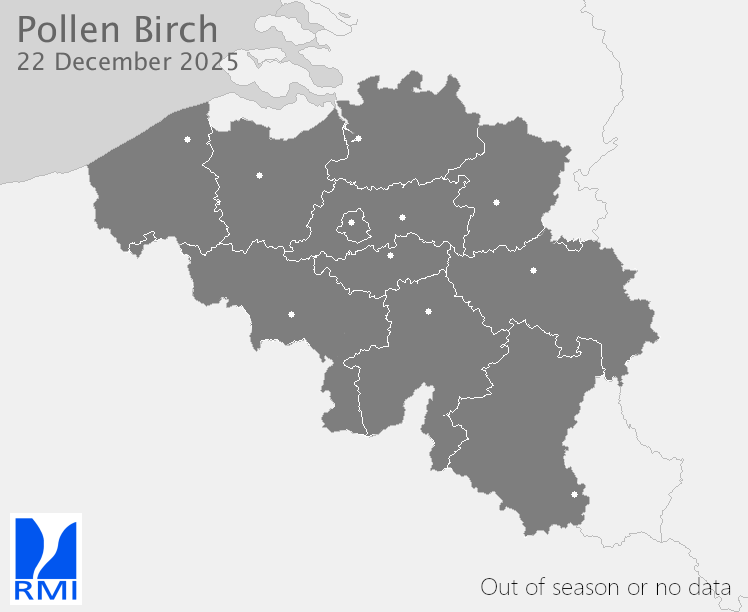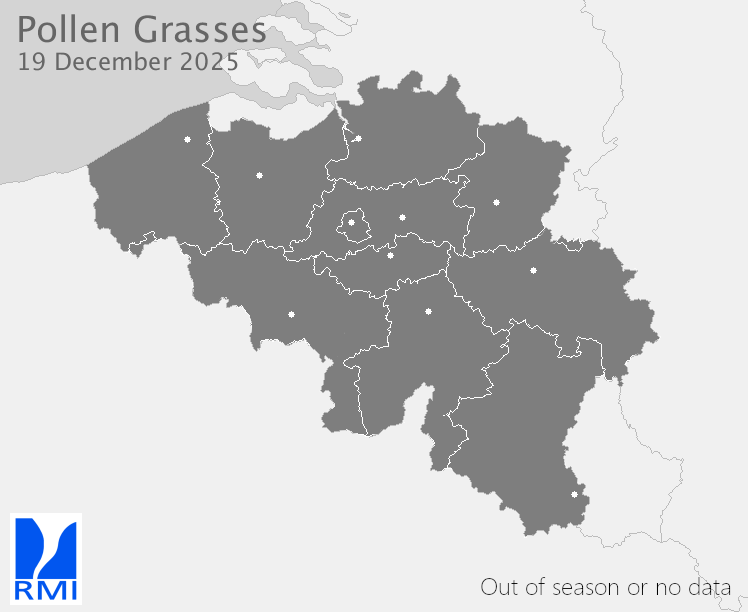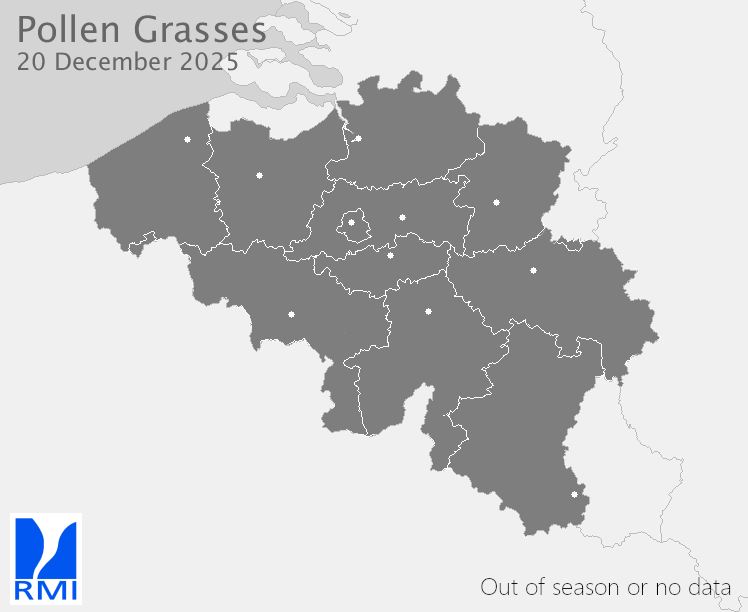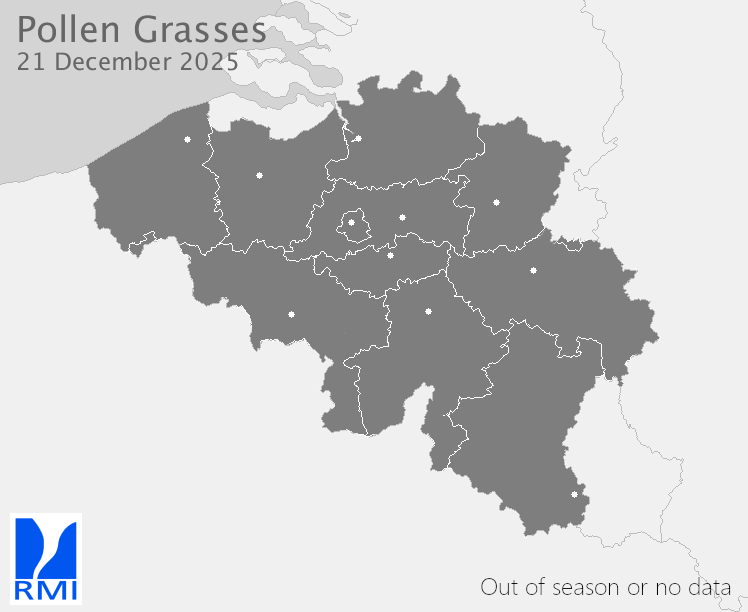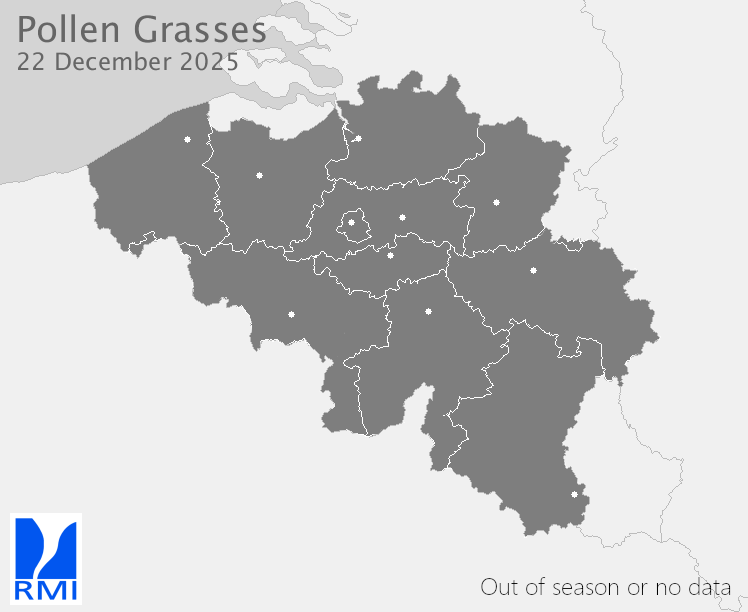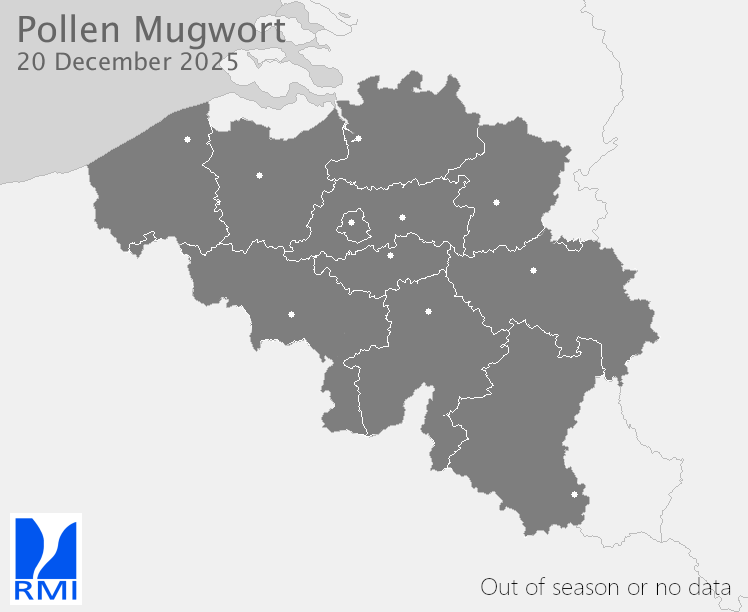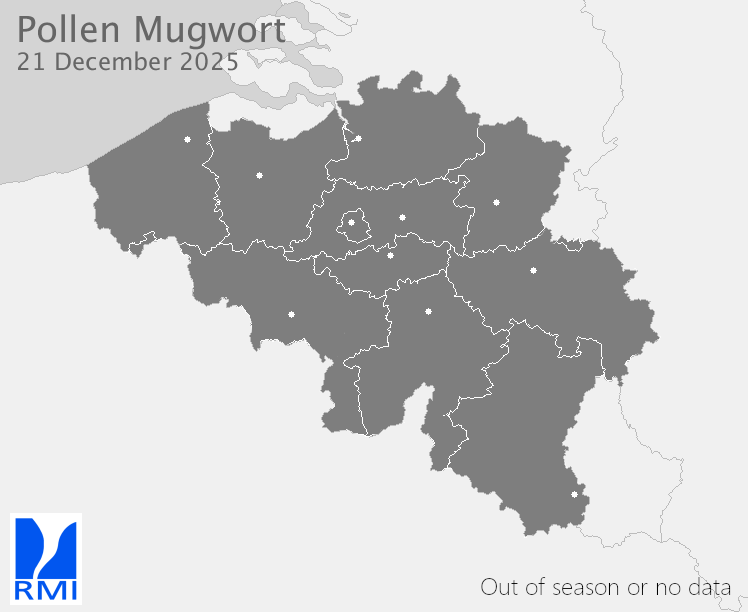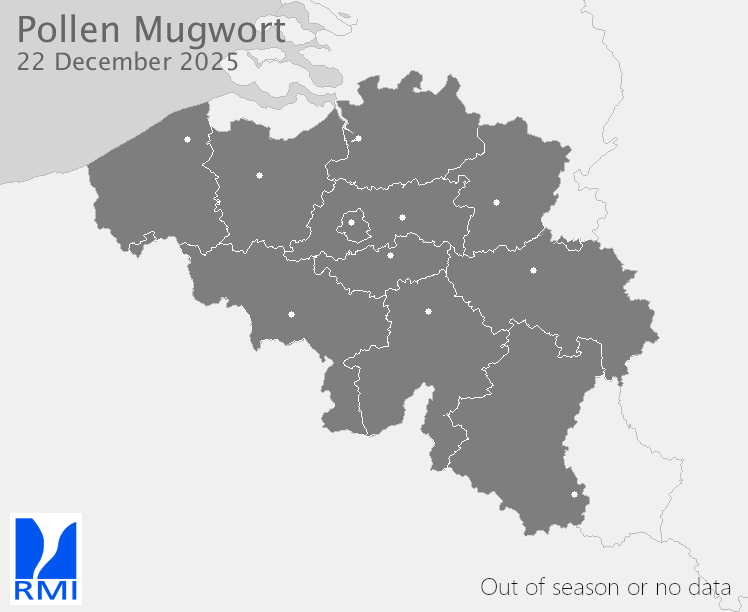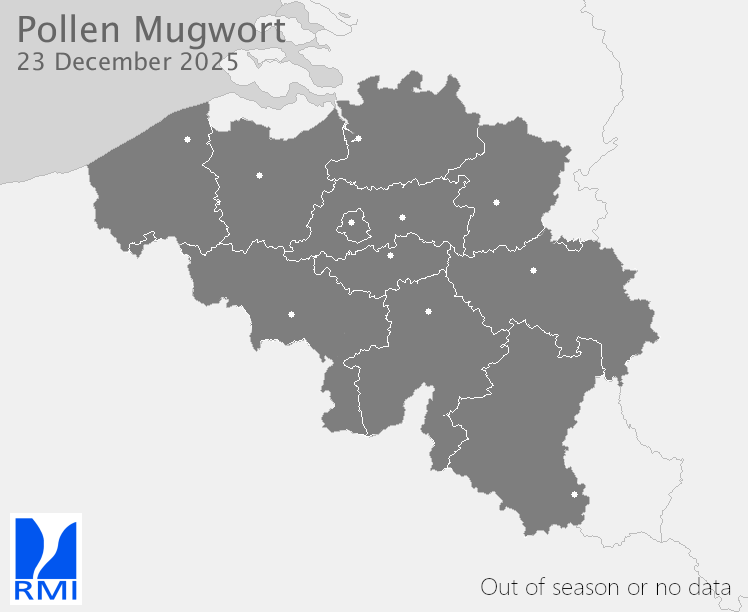Allergy risk forecasts
| Color | Level | Description of the risk |
|---|---|---|
|
|
Null |
No pollen grains are expected in the air. The risk of symptoms is theoretically absent, although very local exposure can trigger allergies. |
|
|
Low |
Low concentrations of pollen in the air are expected. For very sensitive people, these few pollen could induce allergy symptoms. The usual avoidance measures are already recommended. |
|
|
Moderate |
Moderate concentrations of pollen in the air are expected, causing symptoms for people with pollen allergies. The usual avoidance measures are recommended. |
|
|
High |
High concentrations of pollen in the air are expected. Many people who are allergic to this pollen are likely to develop symptoms. The usual avoidance measures are recommended. |
|
|
Very high |
Very high concentrations of pollen in the air are expected. Most people who are allergic to this pollen are likely to develop symptoms. It is strongly recommended to avoid all outdoor activities. |
The maps below show the level of pollen allergy risk that is expected today and in the three coming days. Please note that forecast data will only be available during the pollination period of alder (January-March), birch (March-May) and grasses (May-August).
How are these forecasts made?
The risk of allergy is assessed according to the forecasted presence of birch and grass pollen in the air. These pollen grains are emitted locally from grass and trees depending on the weather conditions. The wind disperses the pollen to other areas where it mixes with pollen from local plants. For example, birch trees from neighboring countries can contribute to the incidence of pollen allergies in Belgium. The expected pollen concentrations are calculated from the basic SILAM (System for Integrated modelling of Atmospheric composition) model adapted for Belgium by the Royal Meteorological Institute (RMI). This model is driven by the RMI and combines meteorological data from the European Centre for Medium-Range Weather Forecasts with birch and grass distribution maps.
How reliable are these forecasts?
Allergy risk forecasts are complementary to Sciensano's field observations and allow to warn allergy sufferers several days in advance about the possible worsening of their symptoms. The pollen forecasting model depends on meteorological forecasts on the one hand and biological processes on the other hand. In other words, meteorological uncertainties are compounded by biological uncertainties. A retrospective study of the RMI forecasts and the Sciensano observations shows that pollen forecasting meets international scientific criteria. However, it should always be kept in mind that the sensitivity of allergic individuals is highly variable and that local exposures to vegetation and/or pollution can have a significant impact on individual perception.
Why are these forecasts only available for alder, birch and grasses?
The development of the basic model is progressive. Birch pollen was the first to be applied in the SILAM model for Belgium by RMI in collaboration with Sciensano. The prediction of alder and grass pollen exposure is more recent. A successful study by the Finnish Meteorological Institute on the use of the SILAM model for other pollens (hazel, mugwort, etc.) offers perspectives for future applications in Belgium.
Where does this information come from?
This information comes from the Atmospheric Dispersion and Composition research group of the RMI and is the result of a close scientific collaboration with the Aerobiology unit of Sciensano. The forecasts are based on the SILAM model developed by the Finnish Meteorological Institute (FMI). European forecasts generated from SILAM and other models can also be consulted on the FMI and Copernicus websites.
Scientific references
-
Verstraeten WW, Kouznetsov R, Bruffaerts N, Sofiev M, Delcloo AW. Assessing uncertainty in airborne birch pollen modelling. Aerobiologia. 2024. DOI: 10.1007/s10453-024-09818-w.
-
Verstraeten WW, Kouznetsov R, Hoebeke L, Bruffaerts N, Sofiev M, Delcloo AW. Modelling grass pollen levels in Belgium. Science of the Total Environment. 2020, 26; 753:141903. DOI: 10.1016/j.scitotenv.2020.141903.
-
Verstraeten WW, Dujardin S, Hoebeke L, Bruffaerts N, Kouznetsov R, Dendoncker N, Hamdi R, Linard C, Hendrickx M, Sofiev M, Delcloo AW. Spatio-temporal monitoring and modelling of birch pollen levels in Belgium. Aerobiologia. 2019. DOI: 10.1007/s10453-019-09607-w.
-
Sofiev M, Vira J, Kouznetsov R, Prank M, Soares J, Genikhovich E. Construction of the SILAM Eulerian atmospheric dispersion model based on the advection algorithm of Michael Galperin. Geosci. Model Dev. 2015, 8, 3497–3522. DOI: 10.5194/gmd-8-3497-2015.
-
Sofiev M, Siljamo P, Ranta H. et al. A numerical model of birch pollen emission and dispersion in the atmosphere. Description of the emission module. Int J Biometeorol. 2013, 57, 45–58. DOI: 10.1007/s00484-012-0532-z.

